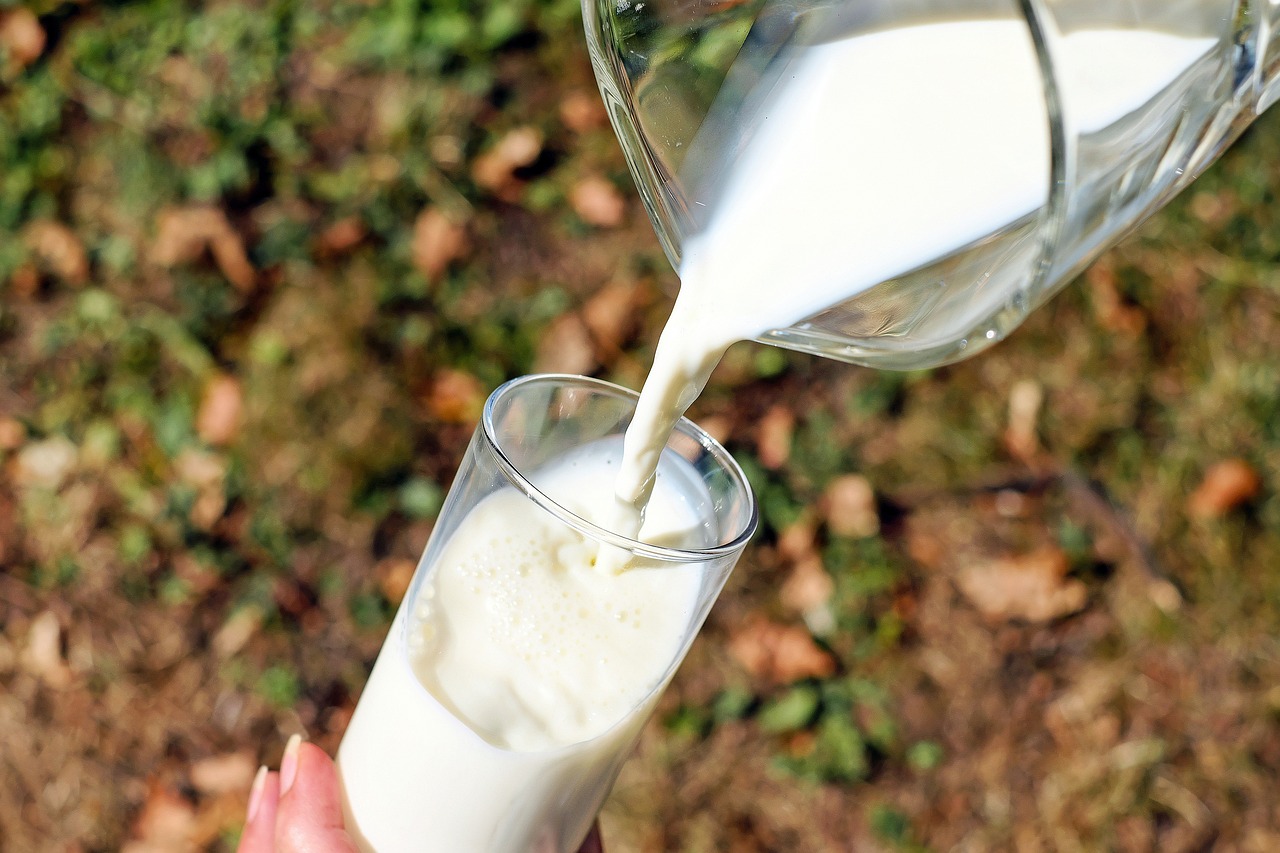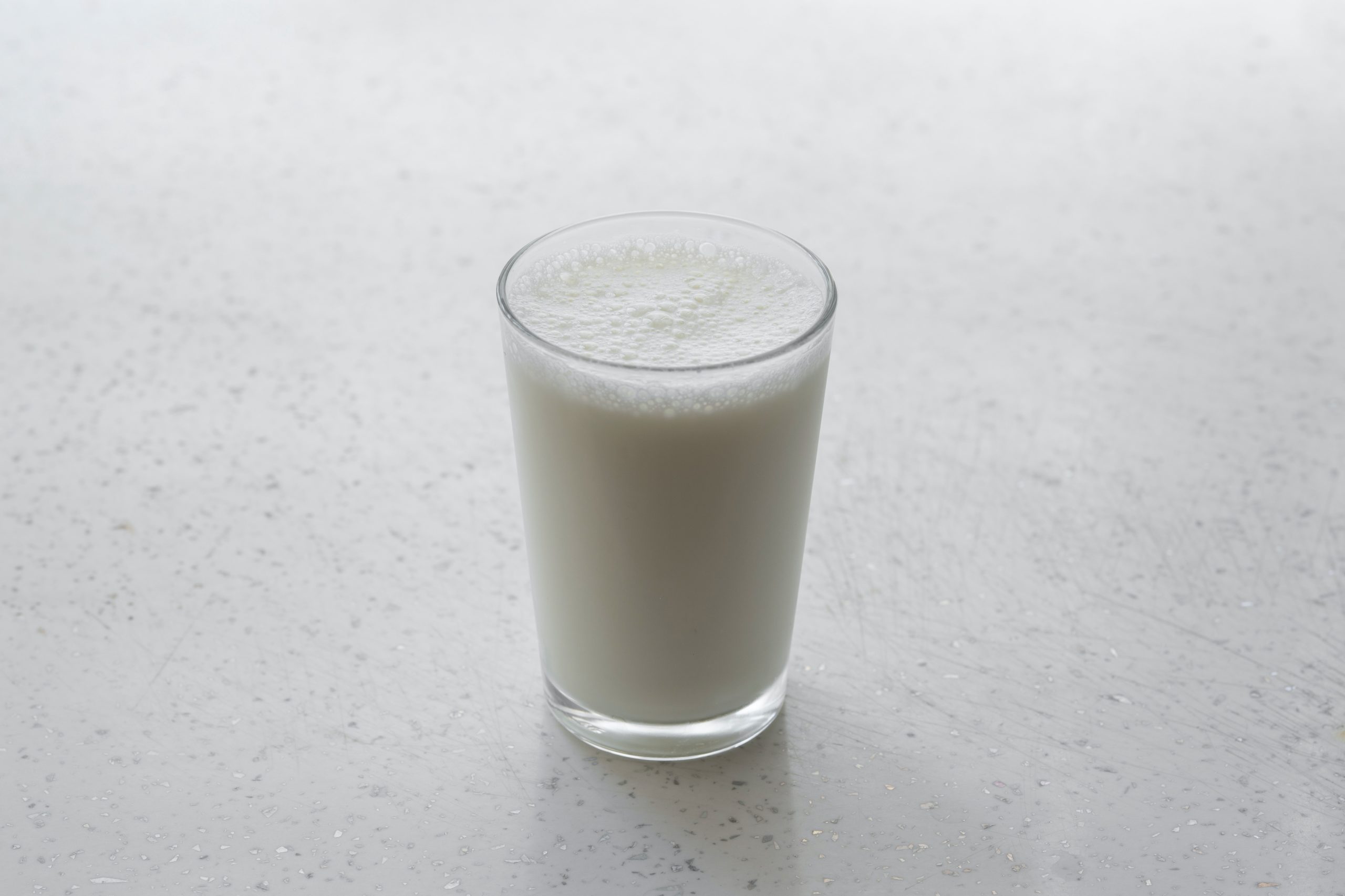Raw milk has not been pasteurized or heated to destroy hazardous microorganisms. It is raw milk from the cow or goat in its original, unprocessed state. Many believe that raw milk contains more beneficial bacteria and enzymes than pasteurized milk because it is killed during the pasteurization process.
Purchasing raw milk is a great way to enjoy the benefits of eating a healthy diet without spending much money. Buying raw milk is also easy because it can be found at supermarkets and grocery stores.
Raw milk, however, can carry hazardous bacteria and represent a risk of illness if not handled and stored appropriately. In this post, we will address the potential benefits and risks of drinking raw milk and some suggestions for those who do.
What is Raw Milk?
Raw milk, also known as unpasteurized milk, has not been pasteurized, which is the process of heating milk to a high temperature to eliminate hazardous germs. While some individuals feel raw milk tastes better or is more nutritious than pasteurized milk, there is no scientific evidence to back up these assertions.
In truth, raw milk can contain pathogenic germs such as Salmonella, E. coli, and Listeria that can cause serious sickness. Many nations have either restricted the sale of raw milk or placed warning warnings on packaging when it is marketed due to the potential hazards of drinking raw milk.
This is because of the greater risk of developing serious milk-borne infections from these products and the lack of any obvious benefit to drinking raw milk.
Pasteurized milk and other pasteurized dairy products are commonly preferred since they are safe and healthy. If you consume raw milk, handle and store it carefully and buy it from reliable sources.
Pasteurization
Among the most important benefits of pasteurizing raw milk is eliminating most bacteria that cause human illness. In addition, it extends the shelf life of milk by several days, which allows more time for consumers to consume the milk.
Many medical and scientific organizations recommend that all human milk be pasteurized. These groups include the U.S. Department of Agriculture and the Food and Drug Administration. They also recommend that the milk be heated to an appropriate temperature and held for a certain time.
Although pasteurization destroys most disease-causing organisms, it does not kill them completely. However, it is the only method currently used to eliminate harmful germs from milk products safely.
Misconceptions
Consumers hold several misconceptions about raw milk. Some people believe it’s dirty, unsafe, or lacks the nutrition that pasteurized milk provides. Others doubt the technology or distrust food processing.
The good news is that many local, small farms provide organic and pasteurized milk products. The bad news is that raw milk contains bacteria that can cause serious illnesses.
While it is true that raw milk is healthier than pasteurized, it does not contain the same number of nutrients, is not beneficial for lactose intolerant individuals, and does not prevent osteoporosis. However, it can help with allergies.
Another myth is that milk containing good bacteria is better for your health. Raw milk does indeed have good bacteria. But it’s also important to remember that the benefits of these bacteria are not as great as they might be if they were cultivated or isolated.
Reference: Raw Milk Consumption: Risks and Benefits
Is Raw Milk More Nutritious?
Nutritional Content
Whether you are an experienced consumer or just starting, it is important to know the nutritional content of raw milk. It is a highly nutritious food, but there are some differences between pasteurized and raw milk.
During the pasteurization process, some beneficial enzymes in raw milk are inactivated. These enzymes help your body metabolize the nutrients in milk. The alkaline phosphatase enzyme is one of these. It helps your body absorb calcium.
Another benefit of raw milk is that it contains several beneficial bacteria. These bacteria are heat-sensitive. They are useful for helping your body digest the fats in the milk. They also help clean your skin pores.
The butterfat in raw milk is rich in vitamin E, B-complex vitamins, preformed vitamin A, and conjugated linoleic acid. It is a good source of phosphorus and iron.
What are the Effects of Homogenization on Milk?
Several studies have been conducted to investigate the effect of homogenization on the properties of milk. Some of the tests have shown that homogenization changes the size and shape of fat globules and the thickness of the cream layer.
Others have indicated that this process may not necessarily result in an increase in the density of the milk. But more studies are needed to understand the effects of homogenization on other milk qualities.
There is no doubt that milk has a short shelf life and presents a favorable environment for pathogenic microorganisms. Therefore, pasteurization is often used to protect the product from spoilage. However, this process can alter the volatile components of the milk and lead to consumer suspicion.
Although pasteurization is known to reduce the titratable acidity of the milk, studies have shown that acidity can be increased when the milk is homogenized. This may be due to the hydrolysis of the fat by the lipase enzyme.
What does Raw Milk Taste Like?
Milk that has not been pasteurized or homogenized is known as raw milk. It’s milk in its purest form, straight from the cow or goat. The flavor of raw milk can vary depending on the animal’s diet, breed, season, and other factors. Some people describe raw milk as rich, creamy, and full-bodied, while others describe it as slightly sour or tangy.
Some people prefer the taste of raw milk to that of pasteurized milk, while others prefer the taste of pasteurized milk. Finally, the taste of raw milk is a matter of personal preference and can differ from one person to the next.
It is important to note that raw milk can cause foodborne illness and is not recommended for pregnant women, children, the elderly, or people with compromised immune systems to consume.
Can I Drink Raw Milk without Boiling it?
It is not advised to consume raw milk without first boiling it. Raw milk may contain pathogenic bacteria such as E. coli, Salmonella, and Listeria monocytogenes, which can cause serious illness.
Pasteurization is the process of heating milk to a high temperature for a short period to kill harmful bacteria. While boiling raw milk does not provide the same level of protection as pasteurization, it can reduce the risk of illness by killing some bacteria in milk.
Although boiling raw milk can help reduce the risk of illness by killing some of the bacteria in the milk, it does not provide the same level of protection as pasteurization. It is important to note that raw milk is unsafe to consume and can harm your health. If you want to drink milk, choose pasteurized milk that has been treated to kill harmful bacteria.
How Long is Raw Milk Good for?
Because raw milk has not been treated to kill harmful bacteria, it has a shorter shelf life than pasteurized milk. Raw milk’s shelf life is affected by several factors, including the temperature at which it is stored, the cleanliness of the milking equipment, and the animal’s health.
Raw milk should be kept in the refrigerator at temperatures below 40°F (4°C). Raw milk can last anywhere from a few days to a week at this temperature, depending on the initial quality of the milk. Raw milk will generally last longer if stored at a lower temperature.
It is important to note that raw milk can spoil or go sour even when stored in the refrigerator. It should be discarded if the milk has an unpleasant odor or taste or is thickened or curdled.
Because the pasteurization process kills harmful bacteria, pasteurized milk has a longer shelf life than raw milk. After opening, pasteurized milk can be stored in the refrigerator for about 5-7 days. Check the expiration date on the packaging and keep pasteurized milk in the refrigerator at temperatures below 40°F (4°C).
Raw milk is not recommended for consumption because it poses a serious health risk. To reduce the risk of foodborne illness, milk should be handled and stored properly. If you want to drink milk, choose pasteurized milk that has been treated to kill harmful bacteria.
Conclusion
There is no recommended daily amount of pasteurized milk if you choose to drink it. The amount of milk you should consume is determined by your age, gender, weight, and level of physical activity. It is also critical to consider the nutrient content of milk and select a type of milk that meets your nutritional requirements. If you are lactose intolerant, you should choose lactose-free milk or a milk alternative, such as almond milk or soy milk.
For advice on the appropriate amount of milk to consume as part of a healthy diet, consult a healthcare professional or a registered dietitian. They can assist you in making informed decisions about the best types of milk and milk alternatives for you.

